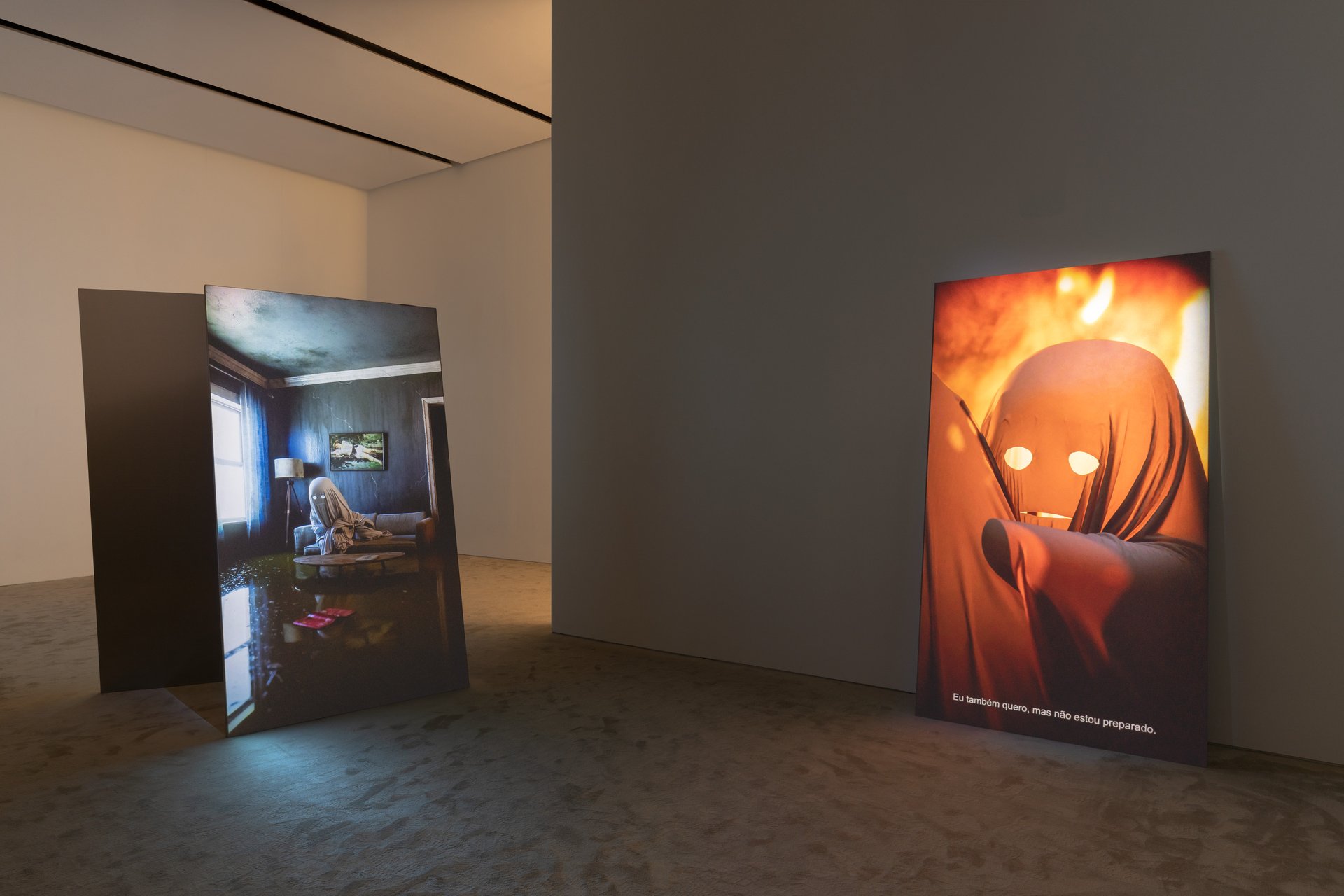Gabriel Abrantes
B. 1984, Chapel Hill, NC, USA. Lives and works in Lisbon, Portugal.

Gabriel Abrantes began painting ghosts as a way of exploring topics of loss, illness, and health. Their appearance is a nod to animation and beloved cartoon characters, whose simple form is enough to draw us into their worlds and emotions. He paints them in an old-fashioned way, emphasising the draperies of their white forms, interacting with the rich history of painting when someone’s work was deemed masterful based on the execution of just such details. With the 4-channel video installation Bardo Loops, however, he makes his way back into animation, but not on account of details. He works with skilled actors, utilising modern animation technology to transform their movements and expressions.
The inspiration for the video work came from the novel Lincoln and the Bardo (2017) by George Saunders. In the book, the author draws on the historical accounts of Abraham Lincoln’s coming to terms with his son’s passing by visiting his crypt and embracing his body. This brings him to imagine a transitional space where spirits who cannot let go of their past lives wander along with the living who cannot let go of the passed souls – bardo, as understood in Tibetan Buddhist philosophy, a liminal space between past and future lives.
For Gabriel Abrantes, this concept became the setting for fictional conversations and disputes between two ghosts stuck in endless loops they cannot get out of, no matter how hard they may try. They exist in ravaged environments, pointing to a dystopian future, a depopulated Earth where only the algorithms and AI remain stuck in echoes and repetitions of our present disagreements. They are exaggerated versions of our online disputes. In an attempt to create a political satire on extremism with a personal twist, Abrantes adds the subtext, everything that usually remains unspoken but nevertheless profoundly shapes our conversations. A sense of a deep and overwhelming crisis echoes through the videos, not just the ecological one, but the crisis of being overwhelmed by social media and AI, of no longer knowing how to reconcile our personal fears with global anxiety. It takes at least a hint of hope, however, Abrantes emphasises, to still make art in this situation.

